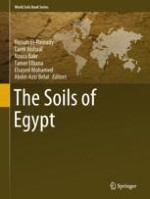2019 | OriginalPaper | Buchkapitel
3. Egyptian Natural Resources
verfasst von : Noura Bakr, Mohamed H. Bahnassy
Erschienen in: The Soils of Egypt
Aktivieren Sie unsere intelligente Suche, um passende Fachinhalte oder Patente zu finden.
Wählen Sie Textabschnitte aus um mit Künstlicher Intelligenz passenden Patente zu finden. powered by
Markieren Sie Textabschnitte, um KI-gestützt weitere passende Inhalte zu finden. powered by
